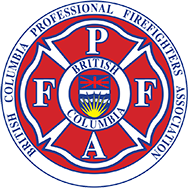4-person crews are the standard (NFPA 1710) across North America - supported by science, Fire Chiefs IAFC and Fire fighters IAFF.
Anything less puts lives — civilian and fire fighter alike — at risk. Many fire departments currently have only 2 or 3 fire fighters per apparatus
Studies have repeatedly shown that fully staffed fire departments have a substantial impact on fire fighters’ ability to do their jobs, provide higher-quality emergency services and protect more lives and more property.
Not only does proper staffing improve public safety, but it keeps fire fighters safe as well.
🔥In an emergency, every Second counts🔥
🔥And so does every fire fighter🔥
Every year, fire fighters in British Columbia are asked to do more. But as call volumes rise, the number of fire fighters on staff continues to decrease – putting lives and public safety at risk.
Proper emergency response starts by ensuring every fire engine and truck has 4 fire fighters – the internationally recognized standard for firefighting. Many fire departments across British Columbia currently have only 2 or 3 fire fighters per apparatus. Some departments are even sending fire fighters on calls by themselves, threatening the safety of both the fire fighter and the community at large.
The British Columbia Professional Fire Fighters’ Association (BCPFFA) urges all municipalities to ensure that when Canadians call for help, 4 fire fighters are on duty and ready to assist them.
FAQ’S
🔥Faster Response, Safer Outcomes
4 fire fighters can immediately begin coordinated operations, minimizing delays in rescues and fire suppression
🔥Better Protection for the Public
From structure fires to vehicle accidents, more hands on the scene means faster response and better health outcomes during emergencies.
🔥Stronger, Safer Communities
Properly staffed fire departments are critical to a strong, reliable emergency response system.
🔥Compliance with NFPA 1710
Ensures departments meet internationally recognized minimum standards for fireground efficiency and crew safety.
🔥Reduced Risk to Fire Fighters
Full staffing means safer working conditions, reducing fire fighters’ risk of fatigue, injuries, exposure to harmful toxins and carcinogens and death.
NFPA 1710; Changes to Fireground Staffing Levels for Career Fire Departments
NFPA 1710 - Industry Standard for Fire Departments: Safe Staffing
NFPA 1710 provides the minimum requirements relating to the organization and deployment of fire suppression operations, emergency medical operations, and special operations to the public by career fire departments.
Fire Fighting is a science, and how many fire fighters show up when you call 911 should not come down to politics.
The NFPA 1710 standard is based on science and research and it says fire engines and ladders should always each have a minimum of four firefighters.
Our industry uses a standard called NFPA 1710 to determine how to properly staff fire halls, fire trucks and ambulances.
For the 2016 edition of the standard, subsection 5.2.4 on fire department service deployment was revised to include three new occupancies, along with the appropriate response staffing levels for each. The minimum staffing level for each occupancy is listed below. (For the full breakdown of staffing requirements by position, refer to the subsections specific to each occupancy in 5.2.4.)



